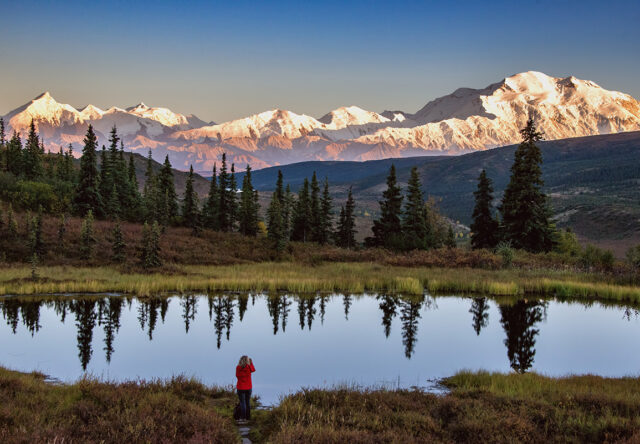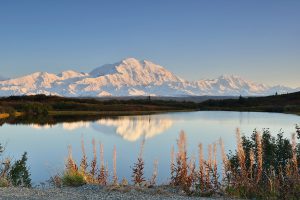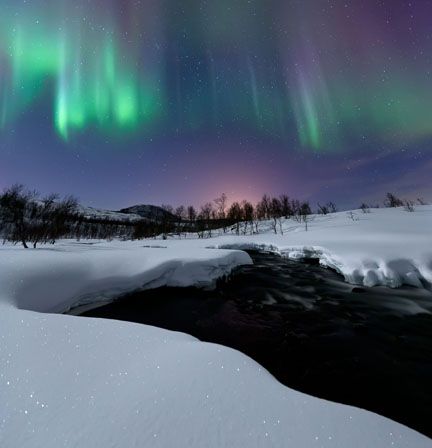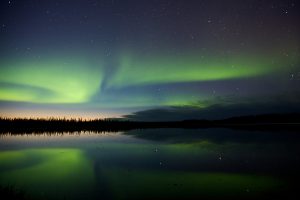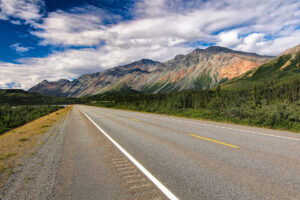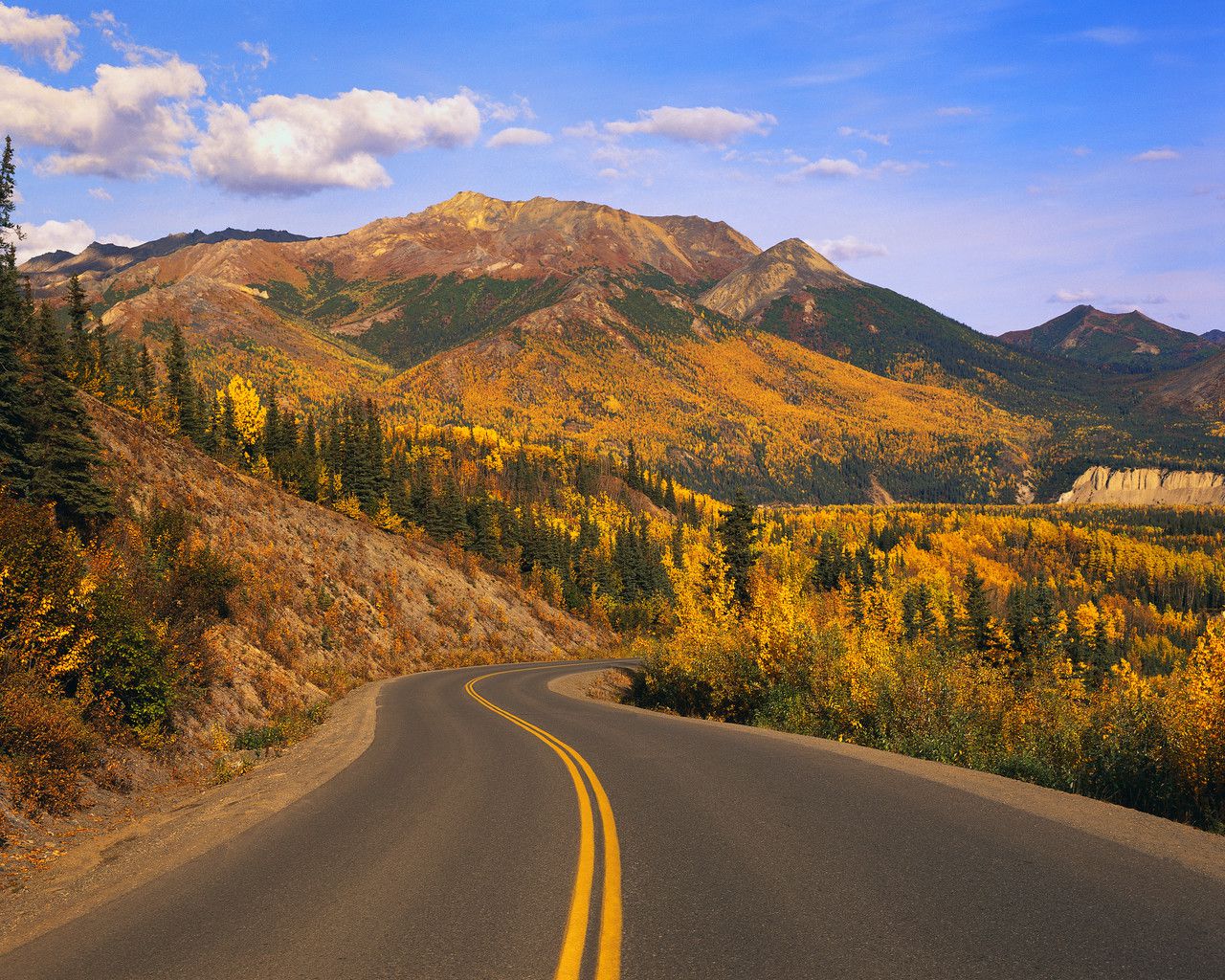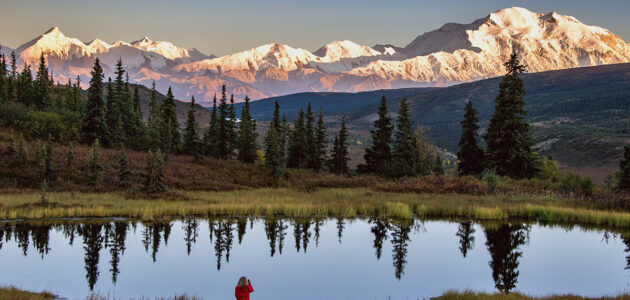
Alaska’s national parks are some of the most breathtaking and remote in the world. They offer diverse landscapes, unique wildlife and incredible opportunities for adventure. Here’s a look at the eight best national parks in Alaska you won’t want to miss.
1. Denali National Park and Preserve

Photo credit: Talkeetna Air Taxi
Denali National Park and Preserve, encompassing over six million acres, is home to North America’s highest peak, Denali. Established as a national park to protect Dall sheep from overhunting, the park has since expanded to preserve the entire ecosystem. This park is renowned for its stunning landscapes, ranging from high alpine tundra to snowy peaks. It’s a great destination for wildlife enthusiasts, offering opportunities to see grizzly bears, wolves, caribou and Dall sheep. Visitors can enjoy wildlife spotting, hiking, camping and bus tours along the Denali Park Road. For those seeking more exploration, mountaineering and flightseeing tours offer gorgeous views of Denali.
Late May to early September is the best time to visit, with extended daylight hours and more accessible roads. In early summer, you may be lucky and see bear cubs and moose calves, whereas the fall brings stunning colors. Denali is accessible via the Parks Highway, about 240 miles north of Anchorage and 120 miles south of Fairbanks. The park is served by a visitor shuttle and bus tours that travel along the park road.
2. Glacier Bay National Park

Photo credit: Neal Alfano
Glacier Bay National Park, located in Southeast Alaska, is a beautiful landscape of glaciers, fjords and temperate rainforest. It is part of a UNESCO World Heritage Site and one of the largest internationally protected Biosphere Reserves in the world. The park is a center for scientists to study glacial and ecological processes. Travelers can take boat tours to see tidewater glaciers calving into the bay, go kayaking and enjoy wildlife viewing. The park is home to humpback whales, orcas, sea otters and brown bears.
The best time to visit is from April through September. Most tours and wildlife opportunities occur during the summer, but catching the shoulder seasons can provide smaller crowds. Late spring is usually a dry period, while early fall is ideal for seeing glaciers after the snow has mostly melted. Glacier Bay is primarily accessed by boat or plane. The park headquarters and visitor center are in Gustavus, which is reachable by small plane or ferry from Juneau.
3. Kenai Fjords National Park

Photo credit: Miles Partnership
Kenai Fjords National Park is famous for its glaciers, fjords and marine wildlife. The park’s Harding Icefield feeds nearly 40 glaciers, creating a dramatic and icy landscape. The park preserves the unique glacial environment and its ecosystems. Boat tours are popular for viewing glaciers and marine wildlife, including whales, sea lions and puffins. Hike the Harding Icefield Trail to see a glimpse of the previous Ice Age, or kayak through Resurrection Bay for a close-up view of the fjords.
May through October has the best weather and wildlife viewing opportunities. The park is accessible by road to Seward, about 130 miles south of Anchorage. From Seward, visitors can take boat tours or hike into the park.
4. Wrangell-St. Elias National Park

Photo credit: Ben Prescott
Wrangell-St. Elias National Park is the largest national park in the United States, covering 13.2 million acres — nearly six times the size of Yellowstone National Park. It features a diverse range of landscapes, including glaciers, volcanoes and mountain ranges. Wrangell-St. Elias includes several historic mining sites from Alaska’s gold rush era. Guests can explore the park through hiking, backpacking, mountaineering and scenic flights. The Kennecott Mines National Historic Landmark was once among the world’s most productive copper mines and the well-preserved structures and artifacts serve as a fascinating site for visitors. Another popular attraction is Root Glacier, one of the most accessible glaciers in the park for hiking.
Visit Wrangell-St. Elias between June and September for warmer temperatures and accessible roads. The park can be reached by road from the Richardson and Edgerton Highways, leading to the towns of McCarthy and Kennecott. Small planes also provide access to more remote areas.
5. Katmai National Park and Preserve

Photo credit: Michael DeYoung
Katmai National Park is famous for the Valley of Ten Thousand Smokes, a volcanic landscape created by the 1912 eruption of Novarupta and its large population of brown bears. The park was formed to preserve the volcanic landscape and expanded to protect the brown bears and their habitat. Bear viewing at Brooks Camp is a popular attraction, where travelers can watch bears catching salmon. The park also offers hiking, fishing and exploring the volcanic landscape.
July through September is the best time for bear viewing and outdoor activities. Katmai is primarily accessed by plane, with flights from Anchorage to King Salmon and then by floatplane to Brooks Camp.
6. Gates of the Arctic National Park

Photo credit: Michael DeYoung
Gates of the Arctic National Park is one of the most remote and pristine wilderness areas in the United States. Located entirely above the Arctic Circle, it offers untouched landscapes and wilderness. This park is one of the least visited national parks in the country and protects the Brooks Range. The local environment is home to a variety of wildlife including caribou, wolves, grizzly bears and Dall sheep. The park’s landscape is characterized by its dramatic peaks, vast tundra and winding rivers. Ideal for backcountry camping, hiking and river floating, Gates of the Arctic is a place for experienced adventurers seeking solitude and true wilderness. There are no established trails or facilities, which means visitors must either be well-prepared for the challenges of navigating the remote environment or go with an experienced tour guide.
June through August is the best time to visit, with milder temperatures and longer daylight hours offering more favorable conditions for exploration. Access to the park is by small plane from Fairbanks or Bettles, with air taxis providing transport to various locations within the park.
7. Lake Clark National Park

Photo credit: Michael DeYoung
Lake Clark National Park is known for its stunning combination of volcanoes, glaciers and of course, Lake Clark. This park preserves the natural and cultural heritage of the area, including the traditional lands of the Dena’ina people, who have called this region home for thousands of years. The park’s diverse ecosystems support an array of wildlife. Popular activities include fishing, bear viewing, kayaking the lakes and rivers and hiking along the many scenic trails. Crescent Lake and Silver Salmon Creek are some of the best spots for fishing, where visitors can catch salmon, trout and grayling. The turquoise lake, set against the backdrop of mountains and active volcanoes, is a picture you’ll never forget.
June through September offers the best conditions for visiting, with milder temperatures and longer daylight hours. During this time, the park is in full bloom and wildlife is most active. The park is accessible by plane from Anchorage, with flights landing at Port Alsworth, a small community that serves as the gateway to the park. From there, travelers can explore the park by boat or on foot.
8. Kobuk Valley National Park
Kobuk Valley National Park is known for its Great Kobuk Sand Dunes and the migration of caribou across the Kobuk River. These massive dunes, some rising to 100 feet, create a striking desert-like landscape amidst the Arctic environment, making the park distinctive. The park not only preserves these remarkable geological features but also protects numerous local archaeological sites that provide insight into the region’s rich cultural history. Visitors to the park can hike the sand dunes, fish in the Kobuk River and witness the caribou migration, which sees hundreds of thousands of caribou traverse the river in search of seasonal grazing grounds.
June through August is the best time to visit, as the warmer temperatures and extended daylight hours make for more comfortable exploring. Access to Kobuk Valley National Park is exclusively by plane from Kotzebue or Bettles, as there are no roads or trails leading to the park.
Alaska’s national parks are the perfect place for adventure, wildlife viewing and connecting with nature. Each park provides a unique experience, from tall mountain peaks to volcanic landscapes. Whether you’re an avid hiker, a wildlife enthusiast or just looking to get outside, Alaska’s national parks have something for everyone. Consider staying at a Westmark hotel while you plan your visit to one of these incredible parks.


